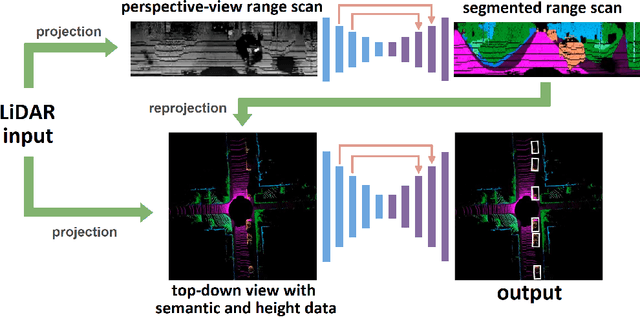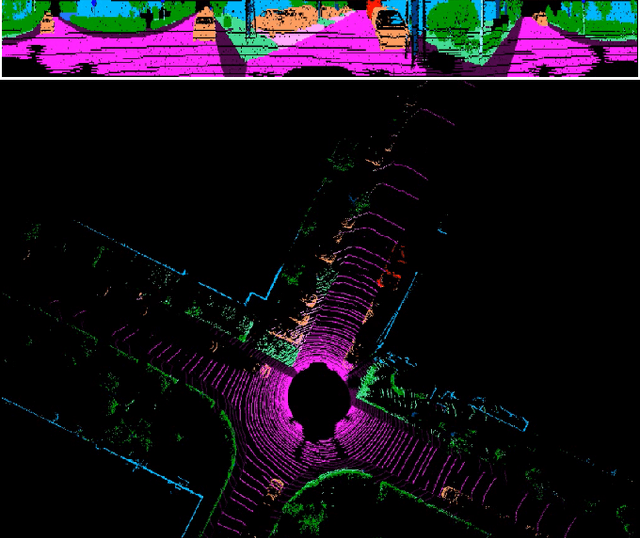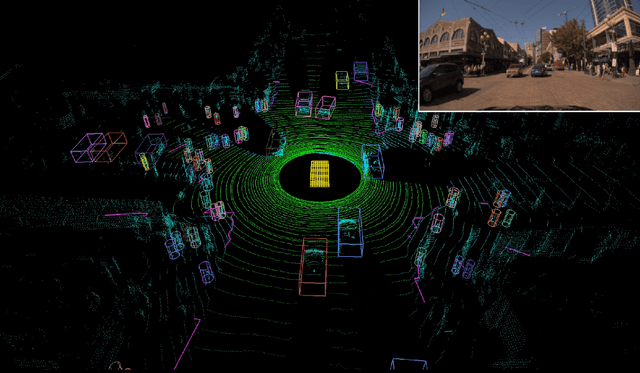David Wehr
MVLidarNet: Real-Time Multi-Class Scene Understanding for Autonomous Driving Using Multiple Views
Jun 09, 2020



Abstract:Autonomous driving requires the inference of actionable information such as detecting and classifying objects, and determining the drivable space. To this end, we present a two-stage deep neural network (MVLidarNet) for multi-class object detection and drivable segmentation using multiple views of a single LiDAR point cloud. The first stage processes the point cloud projected onto a perspective view in order to semantically segment the scene. The second stage then processes the point cloud (along with semantic labels from the first stage) projected onto a bird's eye view, to detect and classify objects. Both stages are simple encoder-decoders. We show that our multi-view, multi-stage, multi-class approach is able to detect and classify objects while simultaneously determining the drivable space using a single LiDAR scan as input, in challenging scenes with more than one hundred vehicles and pedestrians at a time. The system operates efficiently at 150 fps on an embedded GPU designed for a self-driving car, including a postprocessing step to maintain identities over time. We show results on both KITTI and a much larger internal dataset, thus demonstrating the method's ability to scale by an order of magnitude.
Learning Semantic Vector Representations of Source Code via a Siamese Neural Network
Apr 26, 2019



Abstract:The abundance of open-source code, coupled with the success of recent advances in deep learning for natural language processing, has given rise to a promising new application of machine learning to source code. In this work, we explore the use of a Siamese recurrent neural network model on Python source code to create vectors which capture the semantics of code. We evaluate the quality of embeddings by identifying which problem from a programming competition the code solves. Our model significantly outperforms a bag-of-tokens embedding, providing promising results for improving code embeddings that can be used in future software engineering tasks.
 Add to Chrome
Add to Chrome Add to Firefox
Add to Firefox Add to Edge
Add to Edge